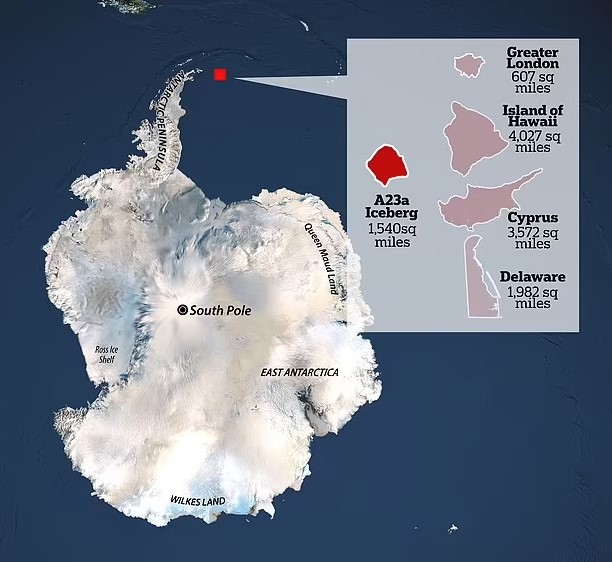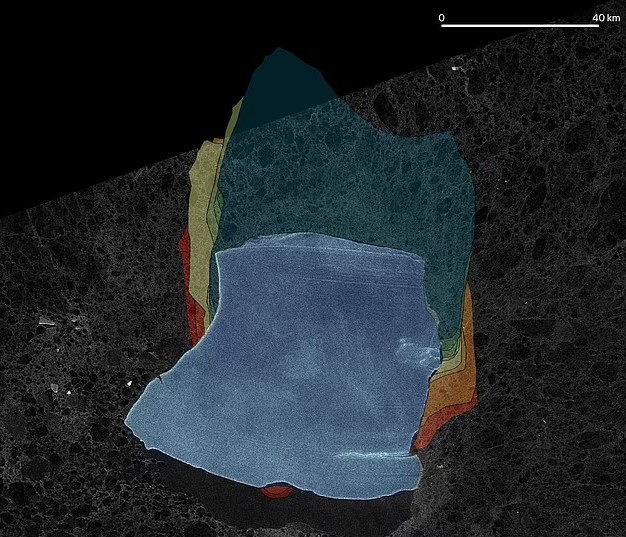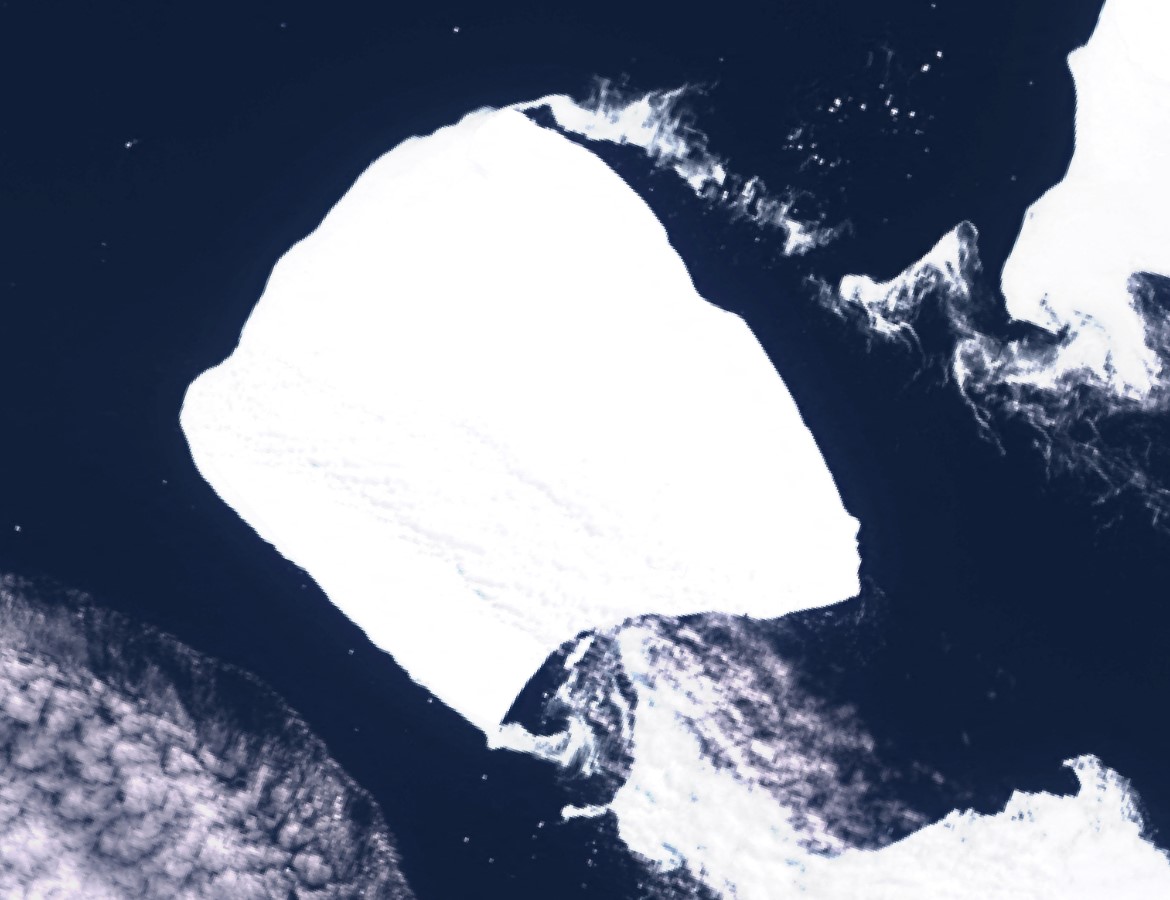Experts warn that a massive ice block twice the size of Greater London is now drifting "at speed" after being trapped to the ocean floor for 30 years.

The massive block of ice, known as A23a, is 1,312 feet thick and covers an area of approximately 1,540 sq miles, which is more than twice the size of Greater London (607 sq miles).
After 30 years of being grounded by the ocean floor, the 'tooth-shaped' A23a is now being dragged at speed northward by wind and ocean currents.
Instead of moving a considerable distance as would have been expected for an iceberg, when it first broke off from the Filchner Ice Shelf in August 1986, it only carried itself a few hundred miles before becoming rooted to the spot.

Nevertheless, it became grounded due to the irregular ocean floor and remained stationary for more than thirty years.
It is moving beyond the Antarctic Peninsula, which protrudes like a tail from the mainland, and when it reaches the open ocean, the rougher conditions should cause it to break down.
After the break-off, objects the size as A23a must be continuously monitored since they may endanger both ships and wildlife.
The BBC was alerted by Dr. Andrew Fleming, a British Antarctic Survey expert in remote sensing, to the first indications of movement from A23a in 2020.

He said: “It was grounded since 1986 but eventually it was going to decrease in size sufficiently to lose grip and start moving.“[We were] wondering if there was any possible change in shelf water temperatures that might have provoked it, but the consensus is the time had just come.”
Iceberg A23a is expected to arrive at the Antarctic Circumpolar Current, potentially impacting wildlife feeding schedules if it lands in South Georgia, according to researchers.
On the other hand, if it melted, the minerals it released might aid in feeding creatures at the base of ocean food chains.
Dr Catherine Walker at the Woods Hole Oceanographic Institution in Massachusetts explained: “In many ways these icebergs are life-giving; they are the origin point for a lot of biological activity.”
Since new icebergs break off the Antarctic continent and calve into smaller shards, the record for the largest current iceberg varies every year.

Global warming-induced increases in air and sea temperatures are causing instability along Greenland's and Antarctica's coasts, hastening melting and raising calving rates.
The previous record holder, A76, broke off into three pieces after detaching from an ice shelf in the Weddell Sea in May 2021.
Large floating platforms of ice that join a continent, like Antarctica, are known as ice shelves, though they can also be found in other polar regions like Greenland.
The largest iceberg ever measured more than 12,000 sq miles (31,000 sq km), which is larger than Belgium, according to the Guinness World Records. On November 12, 1956, the USS Glacier spotted this whopper 150 miles west of Scott Island in the Southern Ocean.






